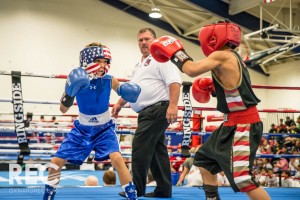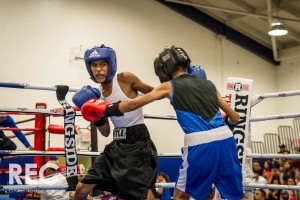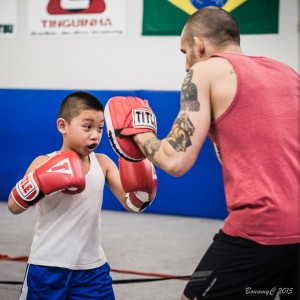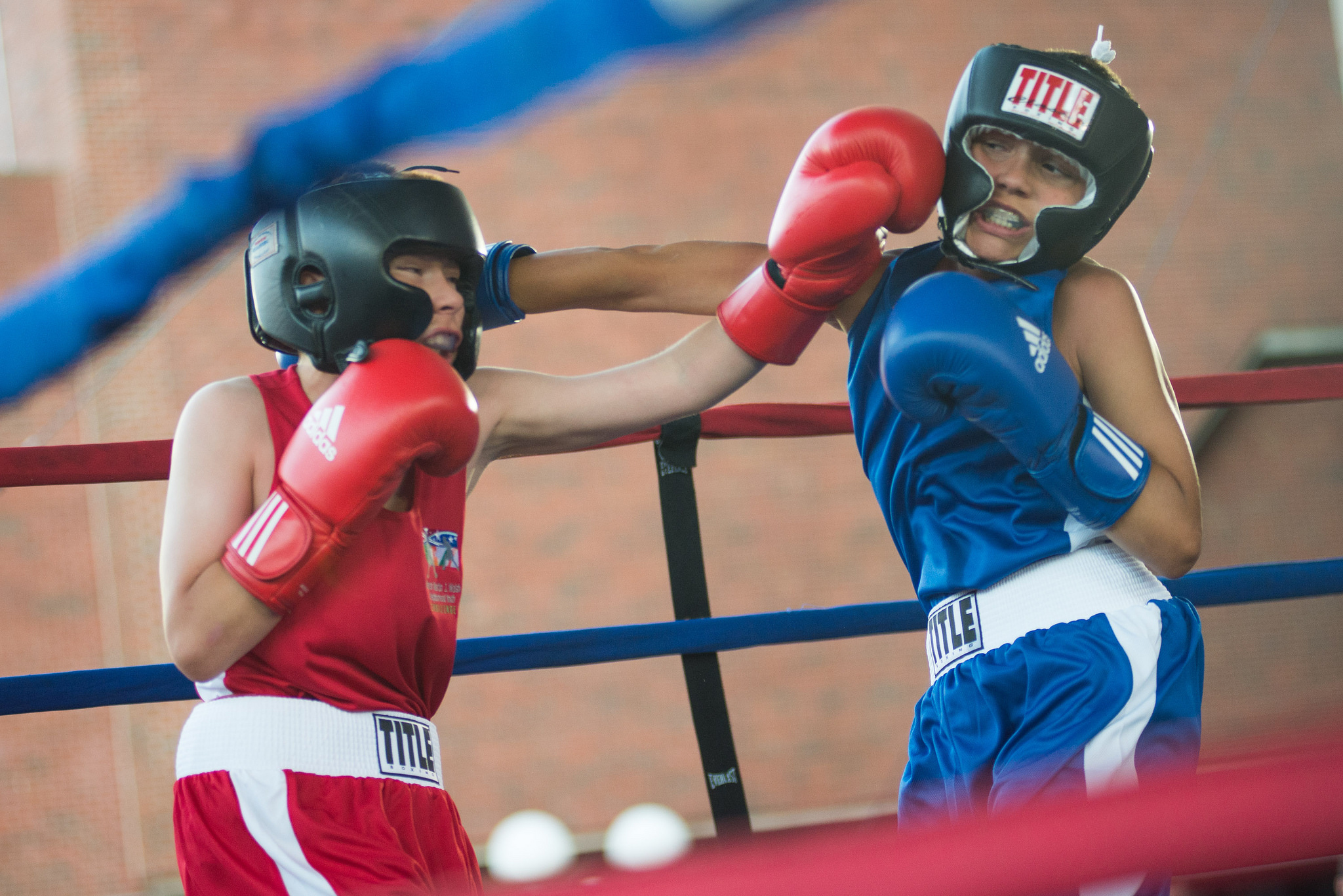When Junior bundles up to you with this much excitement, you know it’s an important announcement.
“Dad, I want to start boxing!”
Your eyes well up with tears, and a lump gathers in your throat as you struggle for words to express the pride you feel. At the tender age of nine, Junior would follow in the footsteps of the greats who learned boxing during childhood.
“Way to go, Champ!”
But then rational thinking and fatherly instincts kick in, and you fear the long-term damage your son’s newfound vocation may cause. I mean, how safe can it be for a child to take repeated blows to the head?
Boxing for kids is a controversial topic. Professional medical bodies call for its outright banning, while fighters and trainers argue that the benefits of boxing far outweigh any risks.
If you’re a parent who can’t decide if you should let your child learn boxing, this post presents both sides of the argument fairly so you can make an informed decision.
At What Age Can Kids Start Boxing?
A common question many parents have is what is the ideal age for children to take up boxing. Like most sports, there are physical and mental readiness factors to consider.
Generally, most boxing gyms accept children from around 8 years old, with some taking kids as young as 6. However, starting formal training this early is controversial.
At 6-8 years old, a child’s brain and skeletal structure are still developing rapidly. Impacts from boxing at this stage may pose higher risks of concussion and bone fractures. For this reason, many experts suggest waiting until at least age 10 before introducing boxing.
Between ages 10-12 is an optimal time to begin boxing training. At this age, kids have better developed hand-eye coordination and balance compared to younger children. They also gain greater muscular strength and cardiovascular endurance during puberty.
Starting boxing around 10-12 allows time to develop fundamental skills so that sparring can be introduced safely at age 13-15. At 15-17, an athlete may compete in sanctioned amateur boxing matches if desired.
While some gifted children may be ready to box earlier, it’s wise to err on the side of caution. Stick to non-contact boxing drills only for 6-9 year olds. This allows them to learn techniques while minimizing head injuries from sparring or competing too soon.
Risks of Boxing at a Young Age

First off, let’s get into the debate against boxing for youths.
In the United States, 18,000 young people under the age of 19 take part in boxing. That number doesn’t account for the thousands more that practice similar combat sports such as muay Thai and mixed martial arts (MMA).
In an age of growing child obesity rates, should we should be proud of these statistics and encourage kids into any and all forms of exercise?
Apparently not. According to this policy statement from the American Academy of Paediatrics and the Canadian Paediatric Society, the consequences of youth boxing are too severe to chance. In short, the policy states that children should not be allowed to practice boxing.
What do you think? A load of hoo-hah? I mean, kids have boxed throughout history, and there was never a fuss made over it. What risks could be so significant to completely ban kids from enjoying sweet science?
1. Cuts, Fractures, and Concussions
The policy highlighted that concussions are the most frequent injury, but young boxers also expose themselves to cuts and fractures, which are the second and third most common boxing injuries.

They suggest non-contact sports, such as tennis, basketball, soccer, squash, and swimming, as safe alternatives. Even football or hockey are preferred as, unlike boxing, which “encourages and rewards deliberate blows to the head”, the focus is on chasing a ball or scoring goals.
They justify putting the kibosh on youth boxing due to the long-lasting effects of concussions on children and teenagers, which can be as long as ten days.
But even more alarmingly, both pediatric societies agree that youth boxing holds the risk of “chronic and even fatal neurologic injuries”.
Parents need to be aware that not all boxing injuries are temporary or reversible. In fact, 659 boxers have died as a result of boxing-related brain injuries from 1918 to 1998!
2. Permanent Brain Damage
Developing brains are more susceptible to injury, and there is now overwhelming evidence linking repeated blows to the head with long-term brain damage.
In 2013, the American Academy of Neurology conducted a study of 239 professional fighters (104 boxers and 139 MMA fighters). The report tracked the number of bouts fought and knockouts received, and related the data to DTI and resting state fMRI scans.
Here are extracts from the report:
“the number of years of pro fighting correlated significantly with reduced volume in the caudate and amygdala, and strong trends were seen toward smaller volumes in the thalamus and putamen,”
“Caudate volumes and years of fighting experience were more strongly related in participants who said they began fighting in earnest at age 15 or younger,”
The key takeaways from the report?
Starting a fight career early and fighting for a prolonged period causes a reduction in brain volume as well as diminished connectivity between certain parts of the brain.
Surprising? No, probably not. Most of us would guess that repeated blows to the head are no good for the grey matter.
While this may not discourage heart-set Junior from boxing, the very real possibility of disorders of movement, cognition, and behaviour, is deterrent enough for most parents to side with the paediatricians.
Benefits of Boxing at a Young Age

Of course permanent brain damage is a serious concern, but before letting your kid box becomes an absolute NO, let’s look at the case for youth boxing.
Let’s start by looking at a statement, Anthony Bartkowski, executive director of USA Boxing, gave in defence of youth boxing to a reporter from NPR Health.
“The skills and traits, young boxers learn through their participation help prepare them for life in and out of the boxing ring and support their development for life’s future challenges. As with any sport, there is risk involved, however the positives developed by participation in youth sports, including amateur boxing, outweigh the potential risk”
The above statement is the boxing communities wide-held consensus on youth boxing. They don’t deny that there is risk associated with boxing; after all, the horrific injuries from boxing have been well-documented. However, they do believe the benefits still far outweigh any downside.
Yes, kids could get their fitness quota by participating in safer sports that are just as challenging and offer similar levels of strength and fitness conditioning.
But on the other hand, as a boxing and muay Thai enthusiast, I would have to argue that I’ve never got the same sense of achievement from any other pursuit, sporting or otherwise, that I’ve got from martial arts.
So why do people choose to box over safer alternatives, and why should you consider letting your child take up boxing? My reasoning is that boxing does three things better than any other sport.
1. Boxing Teaches Values
Boxing teaches respect. After practicing boxing for a short time, even the most loutish of teenagers develop respect for their fellow students, coaches, their gym, and the sport in general.
Boxing teaches discipline. Youngsters quickly realize that to make progress in boxing, you have to be disciplined. Aspiring boxers show up for training whether they feel like it or not and consciously try to stick to a healthy, nutrient-rich diet.
Boxing cultivates a strong work ethic. Boxing training is difficult. Students learn to work hard and know they must consistently give maximum effort to achieve their goals.
Boxing can play a huge part in shaping an individual’s character, especially when young and highly impressionable. The values learned in boxing continue to have a positive influence on a person’s life regardless of whether they continue the sport or not.
2. Provides Opportunities
It’s an unfortunate fact, but many kids who start boxing are from lower socioeconomic areas. Boxing can provide positive role models in a turbulent childhood and give youngsters hope for a better future.
It can steer youths away from petty crime and drugs and instead focus their energies on learning a valuable skill and becoming fit and healthy.
They see that hard work and dedication leads to success in boxing, and they realise that it can do the same for building a career, furthering education, or starting a family.
3. Develops Self-Confidence
Even without ever stepping foot into a ring, the vigorous training and challenging nature of boxing leads to kids developing incredible confidence in themselves.
Boxing is a great confidence builder for kids who have low self-esteem as a result of bullying. Through the small wins in training, these kids build their confidence while learning to defend themselves.
Consequently, they’re no longer an “easy target” and find they get in fewer fights in the playground and on the street.
The benefits around building character, work ethic, etc., may depend on the gym or coaches. Not all gyms nurture these traits to the same degree.
A Safe Way for Kids to Learn Boxing

While you would rather Junior join the school’s basketball team, as all parents know, forcing a child to participate in something they have no interest in is futile. So what’s the solution?
How about a compromise? What about the boxing training without the fighting?
Much of boxing training is focused on bag and mitt drills, body-weight exercises, jumping rope, and jogging.
Kids don’t spar frequently (if at all), and there’s no expectation for them to fight. If and when sparring takes place, it has to be approved by their coach, take place under supervision, and while wearing headgear, gum shield, groin guard, and sparring gloves.
Parents should also be reminded that sparring isn’t fighting. The objective of sparring is to practice new techniques and styles on a moving target. Power is reduced to around 50%, and when combined with the protective equipment worn, sparring rarely results in injuries.
However, if you would still rather your child not participate in sparring, write it into the ground rules.
Takeaways
Boxing can be aggressive – it has its roots in fighting, after all. However, regularly practicing what could be viewed as violent behavior is not the primary concern of parents who, understandably, are more worried about the links to brain function deterioration.
Although evidence linking boxing to brain damage exists, the boxing community (me included) still believes the rewards far exceed the risks.
Everything in life is risk and reward, and risk is inherent in all sports. While boxing does lie further up the risk scale, I believe the sense of accomplishment and the overall feeling of satisfaction and self-worth make this risk worth taking on.
You may not feel the same, but if you have a kid who is determined to box, you may not have a choice.
Successful parenting is often about bargaining and deciding between what your son or daughter wants and what you think is best.
There are ways to manage the risk from boxing (protective equipment, no sparring) that will allow your child to take part in this incredible sport while letting you sleep easy at night.
